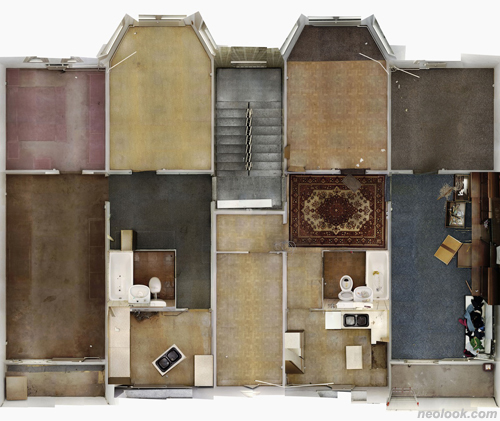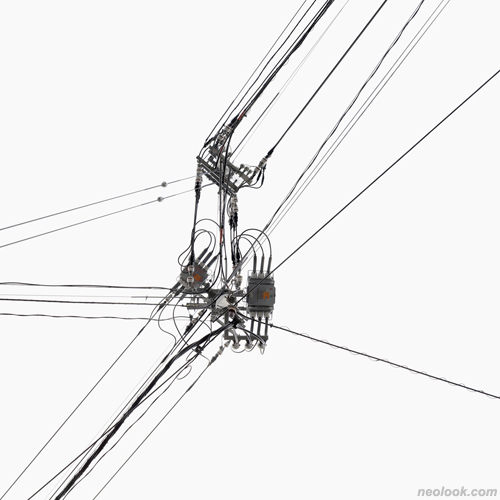- ● homepage
- ● archives
- ● restoration
- ● books
- ● big banners
- ● post board
- ■ neo's search
- ■ about us
- ■ 게재방법 안내
- 개인정보처리방침

- [email protected]
- Tel. 02_335_7922
- Fax. 02_335_7929
- 10:00am~04:30pm
- 월요일~금요일
- 3/3(월) 대체공휴일

Supervisions & Beyond
안드레아스 게펠러展 / Andreas Gefeller / photography 2014_0219 ▶ 2014_0327 / 일,월요일 휴관
● 위 이미지를 클릭하면 안드레아스 게펠러 홈페이지로 갑니다.
초대일시 / 2014_0219_수요일_06:00pm
관람시간 / 10:00am~06:00pm / 일,월요일 휴관
갤러리바톤 GALLERY BATON 서울 강남구 압구정로 29길 65 3층 Tel. +82.2.597.5701~2 www.gallerybaton.com
갤러리바톤은 독일 사진작가 안드레아스 게펠러(Andreas Gefeller, b. 1970)의 아시아 최초 개인전인『Supervisions & Beyond』展을 2월 19일 부터 3월 27일까지 압구정 전시 공간에서 연다. ● 이번 전시는 작가의 대표 시리즈 중「Supervisions」와「The Japan Series」에서의 대표작을 엄선해서 선 보일 예정이다. 두 시리즈 모두 공원, 건물, 도시의 인공 구조물 등 우리에게 익숙한 공간이 작가의 고유한 해석과 독창적인 접근 방식이 개입되면 어떻게 변할 수 있는가에 대해 시각적으로 흥미롭게 풀어내고 있어 국내 미술 애호가들에게 현대사진의 새로운 흐름에 대한 경험과 각각의 작품들이 던지는 화두에 대해 다시금 곱씹어 볼 수 있는 기회를 제공하게 될 것이다.

- 안드레아스 게펠러_Poles 31_파인아트지에 피그먼트 잉크젯 프린트_100×100cm_2010
「Supervisions」시리즈는 모든 사물과 인공 구조물, 심지어 건물 내부의 사진 조차도 마치 공중에서 아무런 제약없이 촬영된 듯한 효과를 연출해 낸다. 사실 이러한 방식의 결과물이 도출되기까지는 작가 특유의 정교한 촬영 프로세스와 사후 보정 작업이 필연적으로 결부되어야 하는데 이러한 과정을 통해 작가 표현에 따르면 "공중에서 날아다니면서" 촬영된 듯한 사진 작품이 탄생하게 된다. 실제 이런 결과물을 위해 작가는 우선 3미터 내외의 높이에서 수 많은 촬영을 통해 최종적으로 평방미터당 정확히 한장의 이미지를 추출하고 디지털 기법을 활용해 그 이미지들을 정교하게 서로 연결시키는 일련의 과정을 수행한다. 최대 3m의 높이에서 촬영되었음에도 불구하고 실제 결과물은 마치 지상으로부터 상당히 이격된 공간에서 촬영된 것처럼 보여지는데, 이러한 연출은 어릴적 천문학에 경도되었던 작가의 이력과 무관치 않다. ● 인공위성이 근접 촬영한 듯한 이미지들인 자연 환경과 인공 구조물은 우리가 인간이 가진 물리적 제약하에서 평소에 보아오던 익숙한 그 것들과는 사뭇 다른 모습으로 다가온다. 작가는 이 시리즈의 작업을 통해 아주 오래전 부터 존재했던 자연 환경이 급속한 산업화와 인구 팽창, 도시의 출현 등에 의해 어떻게 인간을 보조하는 수단으로 전락하게 되었는지도 보여주고 싶었다고 한다. 평방미터당 정확히 한 그루씩 식수되어진 나무들, 건물과 건물 사이에 조경 목적으로 존재하는 정원, 잔듸, 등은 "자연"이라는 원어적인 뜻 마져도 거스르는 방식으로 존재하기에 수긍되는 부분이기도 하다. ● 사무실 또는 대학의 강의실을 공중에서 촬영한 듯한 사진 작품 또한 건물이라고 통칭되는 우리가 살아가고 있는 공간이 얼마나 인간의 편의 극대화(시각적인 만족감을 포함한)에 촛점이 맞추어져 있는지도 여실히 보여준다. 건물에 기본적으로 설치된 부설 기기와 그것들이 위치하고 서로 연결된 방식은 마치 살아있는 유기체내 각각의 부분들이 영양 공급과 순환을 위해 서로 연결되어 있는 방식과 유사할 수 있다는 시각적 근거를 주기에 충분하다.

- 안드레아스 게펠러_Swimming Pool_라이트젯 프린트_170×226cm_2008
「The Japan Series」는 작가가 수 차례 일본을 여행하면서 유럽에서는 쉽게 관찰 할 수 없는 일본이라는 도시의 특성이 반영된 구조물, 즉 전신주와 그 부속물에 흥미를 느끼면서 시작되게 되었다. 앞에서 설명한「Supervisions」과는 반대로「The Japan Series」는 아래서 전신주를 올려다 보는 방식으로 촬영되었고, 세심하게 설정된 구도를 통해 전신주를 기준으로 이웃한 두장의 이미지를 촬영한 후 사후 디지털화 과정에서 기준이 되었던 전신주를 지워버림으로서 결과적으로 각종 부속물과 전기선이 공중에 부양되어 설치된 듯한 장면을 연출한다. ● 각각의 이미지들을 살펴보다 보면 작가가 왜 일본에서 전신주라는 일견 평범한 도시 구조물에 이끌리게 되었는지를 알 수 있는데, 엄밀한 방향성을 가지고 일정한 규칙에 따르듯 고르게 뻗어있는 전선과 계산된 간격을 가지고 설치된 구조물이 흑과 백의 배경하에 놓여있는 모습은 기능성이 최우선적으로 고려된 오브젝트에 역설적으로 깃들여진 미니멀적 요소를 드러냄과 동시에 우리의 관념속에 자리잡고 있는 일본이라는 한 사회의 고유한 작동 방식이 자연스럽게 연상되게끔 이끈다. 특히, 주로 정 가운데 위치한 변압기 및 각종 통신 기기로 부터 질서 정연하게 뻗어나가고 있는 전신주들은 마치 이웃한 공간으로 자가증식해 퍼져나가고 있는 생명체의 신경 또는 혈관을 떠올리게끔 하기도 하는데, Supervision에서 작가가 인간이 지배하는 도시의 구조물과 인접한 자연환경이 어떻게 최적화 되도록 변형되었는지를 보여주었다면 Japan Series에서는 한 걸음 더 나아가 이러한 구조물들이 궁극적으로 살아있는 생명체의 작동 방식과 외형을 모방하고 있음을 보여주고 있다.

- 안드레아스 게펠러_Tree_라이트젯 프린트_180×129cm_2007
1970년 독일 뒤셀도르프 출신인 안드레아스 게펠러는 에센 대학(Univ. of Essen) 에서 사진학을 전공하였다. 2002년 시작한 작가의 최초 연작 시리즈인 Soma와 뒤이어 선 보인 Supervision 시리즈를 통해 국제적인 지명도를 쌓기 시작하였으며, 영국 사치 갤러리(Out of Focus, Saatch Gallery, 2012)와 프랑스 퐁피두 센터(Vue d'en haut, Centre Pompidou Metz, 2013)에서 그룹전을 여는 등 근래 들어 전세계 주요 미술관과 갤러리에서 두각을 나타내며 활발한 활동을 이어가고 있다. ■ 갤러리바톤

- 안드레아스 게펠러_Panel Building 5_라이트젯 프린트_110×131cm_2004
Gallery Baton presents "Supervisions & Beyond", the first solo exhibition in Asia of German photographer Andreas Gefeller (b. 1970) from February 19th to March 27th at the Apgujung exhibition space. ● This exhibition presents leading works from the artist's major series, "Supervisions" and "The Japan Series". Both these series release in a visually interesting way how the structures that are familiar to us like parks, buildings and man-made urban spaces transform when the artist's own interpretation and creative approach are intervened; therefore, it will provide an opportunity for the local art lovers to experience a new wave of contemporary photography and dwell upon the topic that each work brings. ● "Supervisions" series creates the photographic effect of not having restrictions in the air even for the photos of man-made structures and interiors of the buildings. In fact, in order to derive this way of result, the artist's unique sophisticated process and correction work should inevitably be colligated with each other. Through this process, according to the author's way of expression, the photographs that seem to be taken while "flying in the air" are born. For the results like this, the artist takes numerous photographs at the height of about three meters and extracts exactly one final image per one square meter. He then performs a series of steps by utilizing digital technique to exquisitely interconnect these images. Although the photographs are taken from the maximum height of three meters, the actual results seem to be taken from the space that is significantly apart from the ground. This production is not unrelated to the artist's childhood history of being absorbed into astronomy. ● The images of natural environment and man-made structures that seem to be close up shots by satellites approach to us quite differently from the familiar ones that we see normally within the physical constraints laid onto the humans. Through this series, The artist also wanted to show how the natural environment, which has existed for a long history, has become a means of assisting humans due to the rapid industrialization, increase of population, and emergence of city. The trees that are planted by exactly one square meter, the garden and lawn existing for the purpose of landscaping between the buildings, etc. exist in a way that goes against the original meaning of "nature," thus making his ideas agreeable. ● His works also clearly show how the space that we live in is focused on the maximization of human's convenience (including visual satisfaction) as the photographs of office or lecture hall are collectively known as buildings. The devices installed in the buildings by default and the way they are located and interconnected are sufficient to give visual basis for suggesting that it could be similar to the way how living organisms are connected to each other for supply and circulation of nutrition. ● "The Japan Series" began when the artist traveled to Japan several times and found interest in the structures that have special characteristics of Japan that cannot be easily observed in Europe, such as telephone poles and their accessories. As opposed to the previously explained series "Supervisions", "The Japan Series" was photographed by looking up the telephone poles. Through meticulously set composition, the artist shoots two images that are juxtaposed against each other based on the telephone pole and erases this pole during the process of post-digitization; therefore, the end result creates a scene with various accessories and electrical lines installed in the air. ● While looking at each image, the reason why the artist is drawn to telephone poles, the seemingly mundane urban structures, in Japan can be realized. The electric wires are evenly stretched with strict direction and follow certain rules, and they lie in the black and white background by being installed with calculated intervals. This image reveals minimalistic element of how paradoxically the functionality has become the primary consideration for any object. At the same time, it naturally leads us to ponder about the functioning behavior of a society, Japan, which lies within our notion. ● In particular, the telephone poles that stretch out in an orderly manner from the transformer and various communication devices that are mainly located in the exact center make us to recall living organisms' nerve or blood vessel that spread into neighboring space by self-propagation. While the artist showed how the structures in the human-dominated cities and their natural environments have been transformed to become optimized in "Supervisions" series, he takes one step further in "The Japan Series" by showing that these structures ultimately mimic the behavior and appearance of living organisms. ● Born in 1970, the Düsseldorf-based Andreas Gefeller studied photography at University of Essen. He began to establish international recognition through his first series "Soma" which started in 2002 and "Supervisions" series. He recently had group exhibitions, "Out of Focus" at Saatchi Gallery in 2012 and「Vue d'en haut」at Centre Pompidou Metz in 2013, and he continues to work actively with his works shown at prominent museums and galleries around the world. ■ GALLERY BATON
Vol.20140219b | 안드레아스 게펠러展 / Andreas Gefeller / photography

